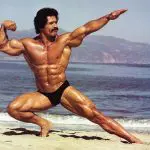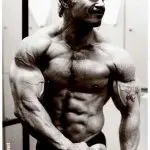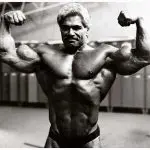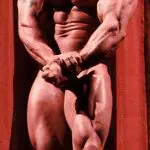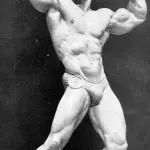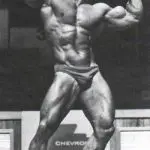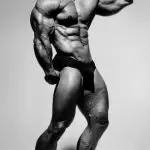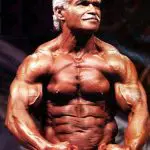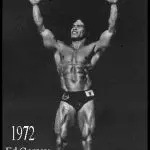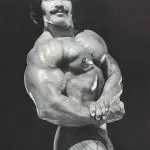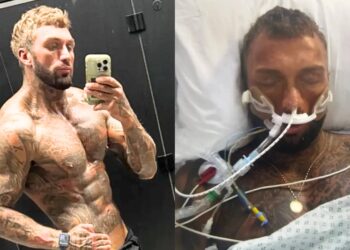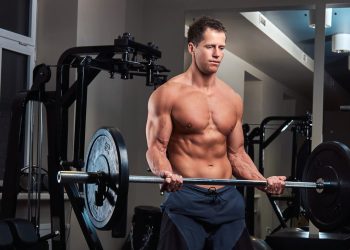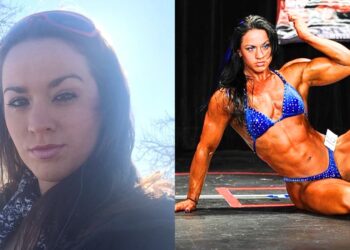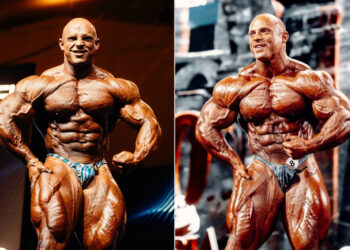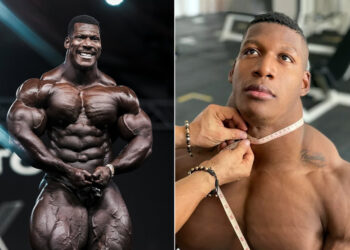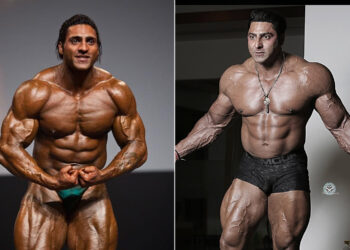Ed Corney (Edward) is widely regarded as the greatest poser that the sport of bodybuilding has ever known. Ed won the IFBB Mr. America, IFBB Mr. Universe, IFBB Masters over 60 Olympia (twice), and he was a member of the IFBB Hall of Fame. As a classic bodybuilder of the Golden Age, he continued to serve as both a spokesman and ambassador for the sport until the last days of his life This is his story.
Ed Corney (Bodybuilder)
Born: November 9, 1933
Died: January 1, 2019
Place of Birth: Honolulu, Hawaii
Place of Residence: Manteca, California
Level Up Your Fitness: Join our 💪 strong community in Fitness Volt Newsletter. Get daily inspiration, expert-backed workouts, nutrition tips, the latest in strength sports, and the support you need to reach your goals. Subscribe for free!
Height: 5’6″ (167.5 cm)
Weight: 194 lbs (88 kg)
Era: 1970s, 1980s
Ed Corney Biography
Early Life
Ed Corney was born on November 9, 1933, in Honolulu, Hawaii. As someone who was born and raised in Hawaii, he was a natural at volleyball, body and board surfing as well as outrigger canoe paddling. However, he did not participate in many other team sports.
Corney was introduced to judo when he was 14 years old as one of his friends invited him to the Dojo for training. Corney earned a black belt within four years. But apart from the combative skills, the discipline and focus required to excel at martial arts served him well in his bodybuilding career later in life.
Corney did several jobs before becoming a professional bodybuilder. In 1950, he enlisted in the U.S. Coast Guard and, after serving in New York City, moved out to California. He first turned to the weights room when he was working as an aviation radio mechanic at Oakland Airport in the late 1950s.
Ed Corney and his team of Hawaiians went up against a team exclusively composed of bodybuilders during one of the games. He was under the impression that the bodybuilders would be slow, rigid, and sluggish compared to them. However, the bodybuilders performed well against Corney’s team and one of the bodybuilders on that team, Millard Williamson, left a lasting impression on the Hawaiian’s mind.
Williamson advised Corney that weight training was the fastest and most efficient way to get fit and told him that proper weight training can make people more coordinated and faster. Corney said in an interview:
“In the weeks that followed, I kept thinking about how much I would like to have a physique like Williamson’s. With this goal in mind, I joined a local gym. I fumbled around a bit before I really learned any proper training methods, but even so, I immediately began to see my great genetic potential begin to manifest itself.”
Corney started training in his late 20s and early 30s but despite a late start, he was able to build an impressive and stage-worthy physique on the back of hard work, discipline, and excellent genetics.
Bodybuilding career
At 160 pounds and age 33, Corney entered and won his first contest in 1967, the Mr. Fremont, held in Northern California. His wins the following year included Mr. Heart of California, Mr. Northern California, and Mr. Golden West.
Ed continued to climb the bodybuilding ladder with impressive wins at the 1970 Iron Man, the 1971 AAU Mr. California, the 1971 IFBB Mr. USA, the 1972 IFBB Mr. America, and the 1972 IFBB Mr. Universe that was held in Baghdad, Iraq.
Corney achieved even broader public recognition due to his appearance in both the book and movie versions of “Pumping Iron”. He was pictured on the cover of the book and the posters for the movie. In the film, we see Ed training alongside Arnold Schwarzenegger, with a mind-numbing intensity but also flowing flawlessly from one of his classic and unique poses to the next as Arnold comments, “Now that’s what I call posing”.
Corney’s pioneering posing transitions distinguished him from his peers at the time, and his incredible stage performances are still revered and imitated.
In 1994 Corney returned to competition. He won the 60+ division of the Masters Olympia in both 1994 and 1995, placed 11th overall in 1996, and took second in the 60+ division in 1997. He also competed in 1998 in the only Masters event ever to be held at the Arnold Schwarzenegger Classic.
Later years and death
Years of intense training caught up with Ed Corney as he had to undergo shoulder replacement surgery in 1999. However, he suffered a heart attack during the surgery and suffered two strokes as the after-effect of the heart attack. However, he continued to train hard after recovering and never allowed anything to stop him from chasing his passion.
On December 25, 2018, Ed Corney suffered a brain aneurysm and he passed away on December 1, 2019, in his home at Manteca, California. He was 85 years old at the time of his passing.
Competition History
1967
- Mr. Fremont – 1st place
1968
- AAU Mr. California – 5th place
- AAU Mr. North California – 1st place
1969
- AAU Mr. Western America – 1st place
1970
- AAU Mr. America – 11th place
- AAU Mr. California, Most Muscular – 2nd place
- AAU Mr. California – did not place
- Iron Man – 1st place
1971
- AAU Mr. America – 4th place
- IFBB Mr. America, Short – 1st place
- AAU Mr. California, Most Muscular – 1st place
- AAU Mr. California – 1st place
- IFBB Mr. USA, Short – 1st place
- IFBB Mr. USA – Overall winner
- IFBB Mr. Universe, Medium – 3rd place
1972
- IFBB Mr. America, Short – 1st place
- IFBB Mr. America – Overall winner
- IFBB Mr. International – 1st place
- IFBB Mr. Universe, Medium – 1st place
- IFBB Mr. Universe – Overall winner
1973
Level Up Your Fitness: Join our 💪 strong community in Fitness Volt Newsletter. Get daily inspiration, expert-backed workouts, nutrition tips, the latest in strength sports, and the support you need to reach your goals. Subscribe for free!
- IFBB Mr. World, Medium – 1st place
1974
- IFBB Mr. International, Short – 1st place
- IFBB Mr. World, Short – 1st place
1975
- IFBB Mr. Olympia, Lightweight – 2nd place
- IFBB Universe Pro – 2nd place
- IFBB World Pro Championships, Lightweight – 2nd place
1976
- IFBB Mr. Olympia, Lightweight – 3rd place
1977
- IFBB Mr. Olympia, Lightweight – 2nd place
- IFBB Mr. Olympia – 3rd place overall
1978
- IFBB Night of Champions – 4th place
- IFBB Mr. Olympia, Lightweight – 4th place
- IFBB Mr. Olympia – 7th place overall
1979
- IFBB Canada Pro Cup – Did not place
- IFBB Florida Pro Invitational – 7th place
- IFBB Grand Prix Pennsylvania – Did not place
- IFBB Night of Champions – 8th place
- IFBB Mr. Olympia, Lightweight – 9th place
- IFBB Pittsburgh Pro Invitational – 8th place
- IFBB Universe Pro – 5th place
- IFBB World Pro Championships – 5th place
1980
- IFBB Grand Prix Miami – 6th place
- IFBB Grand Prix Pennsylvania – 6th place
- IFBB Night of Champions – 4th place
- IFBB Mr. Olympia – 11th place
- IFBB Pittsburgh Pro Invitational – 6th place
- IFBB Universe Pro – Did not place
- IFBB World Pro Championships – Did not place
1981
- IFBB Mr. Olympia – 13th place
1983
- IFBB Mr. Olympia – 14th place
1989
- PBA Super Bowl of Bodybuilding – 4th place
1994
- IFBB Master Olympia, Masters 60+ – 1st place
1995
- IFBB Master Olympia, Masters 60+ – 1st place
1996
- IFBB Master Olympia, Masters – 11th place
1997
- IFBB Master Olympia, Masters 60+ – 2nd place
1998
- IFBB Arnold Classic, Masters – 10h place
Ed Corney Workout
Ed Corney belonged to the golden era of bodybuilding and like most bodybuilders at the time, the barbell was the primary piece of equipment in his training routine. Corney’s training routine revolved around the three main lifts – squats, bench press, and deadlifts – but he also included other compound and isolation movements for the overall development of his physique.
Although muscle mass, definition, and aesthetics are the primary objectives of bodybuilding training, emphasis on free-weight compound exercises meant that Corney had also developed immense physical strength.
While the veteran bodybuilder took his weight training extremely seriously, cardio was non-existent in his workout routine. However, that changed in the later years of his life.
Association with Arnold Schwarzenegger and the move to Gold’s Gym in Venice Beach, California also made a huge impact on Corney’s training practices. He moved to train over there following his wins at the USA, America, and the Universe. Corney was invited by Schwarzenegger to live and train with him. He described the experience of training at the Gold’s Gym:
“As far as the Gold’s Gym experience goes, I still remember it like it was yesterday. Certain things stand out in my mind: maximum intensity training as well as complete focus and determination. I can also still hear the sounds of weights rattling and being re-racked mixed with the noise of human exertion along with the smell of sweat.”
At the time, bodybuilding legends like Frank Zane and Franco Columbu were training at the Gold’s gym among others. Corney felt that it was once in a lifetime, perfect moment for the sport.
Training Split
During the peak of his physical abilities, Corney trained six days per week and followed a double training split. He worked every body part a minimum of twice every week and spent hours in the gym every single day.
The training split was categorized into two parts. On Monday, Wednesday, and Friday, Corney would perform chest, shoulders, biceps, and calve exercises. Meanwhile, abs, legs, back, and triceps were tackled on Tuesday, Thursday, and Saturday.
Sunday was a rest day but Corney would mostly perform active recovery drills on this day, which essentially meant that there were no full rest days in his weekly routine.
Monday, Wednesday, and Friday
Chest
- Bench Press – 5 sets of 8 to 10 reps
- Incline Bench Press – 5 sets of 10 reps
- Flat Dumbbell Flyes – 5 sets of 10 reps
- Cable Crossover – 5 sets of 12 reps
Shoulders
- Alternating Single Arm Lateral Raises – 5 sets of 10 reps
- Shrug to Half Lateral Raises – 5 sets of 8 reps
- Dumbbell Shoulder Press – 5 sets of 8 reps
- Lying Lateral Raises – 5 sets of 10 reps
Biceps
- Barbell Curls – 6 sets of 6 to 8 reps
- Dumbbell Concentration Curls – 6 sets of 10 reps
- Alternating Dumbbell Curls – 5 sets of 6 to 8 reps
- Close Grip Barbell Curls – 5 sets of 10 reps
Calves
- Standing Toe Raises on Machine – 6 sets of 10 to 12 reps
- Seated Calf Raises on Machine – 6 sets of 25 reps
Tuesday, Thursday, and Saturday
Abs
- Hanging Leg Raises – Circuit
- Broomstick Twists
- Crunches
- Situps
Legs
- Barbell Squats – 6 sets of 10 to 12 reps
- Leg Extensions – 6 sets of 15 to 20 reps
- Prone Leg Curls – 6 sets of 15 to 20 reps
Back
- Bent Over Barbell Rows – 5 sets of 10 reps
- Wide Grip Lat Pulldowns – 5 sets of 10 reps
- T-Bar Rows – 6 sets of 8 reps
- Chin-Ups – 5 sets of AMRAP
Triceps
- One Arm Overhead Dumbbell Extensions – 5 sets of 10 reps
- Skull Crushers – 5 sets of 10 reps
- Close Grip Bench Press – 6 sets of 8 reps
Changes to the training routine
Ed Corney trained in the same manner throughout his life. However, things changed a little bit with growing age and the wear and tear of an intense bodybuilding lifestyle. Corney incorporated cardio in his training routine in the later years of his life to keep the heart and cardiovascular system healthy.
He had to undergo a shoulder replacement surgery which also called for some mandatory changes to the training methods. Corney had to eliminate certain pressing movements from his routine which had become difficult to perform after the surgery.
He started employing pulling motions a lot more and also switched to using dumbbells instead of barbells in some exercises.
Ed Corney Diet
Like most yesteryear bodybuilders, Ed Corney followed a high-protein diet and kept fat intake relatively low. During competition preps, Corney aimed to eat at least 150 grams of protein and 200 grams of carbohydrates per day.
His diet was similar to a typical bodybuilder’s diet which included lean sources of protein like chicken breasts, fish, lean cuts of beef, and egg whites. Corney avoided consuming simple carbohydrates and focused on eating complex carbohydrates.
He included leafy green vegetables in the diet for fiber, vitamins, other micronutrients, and minerals. But the veteran bodybuilder eliminated carbohydrates from the diet as he got closer to the competition date. This approach helped him bring a more defined and shredded physique to the stage.
Ed Corney got help from supplements to meet the daily nutritional requirements. Like most bodybuilders of that era, he relied on liver tablets, multivitamins, and protein supplements.
To Conclude…
Ed Corney is a manifestation of the fact that it is never too late to start if you are passionate about something. Bodybuilding is an intense craft that requires a lifetime of commitment for someone to excel at it. Corney discovered it fairly late in his life but still managed to become a world-class athlete when he pursued it with passion, dedication, discipline, and focus.

